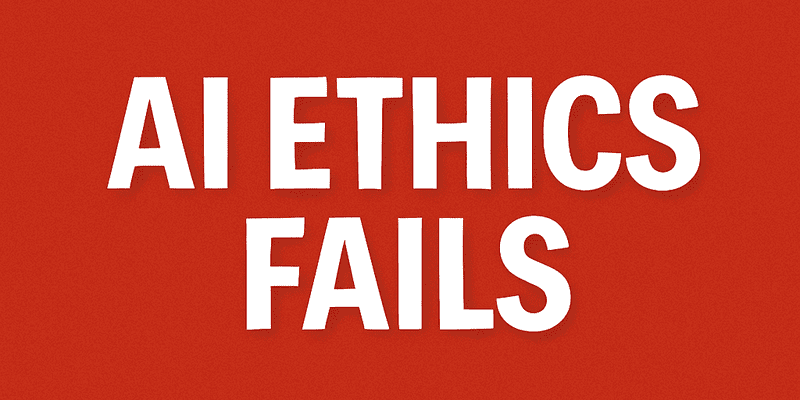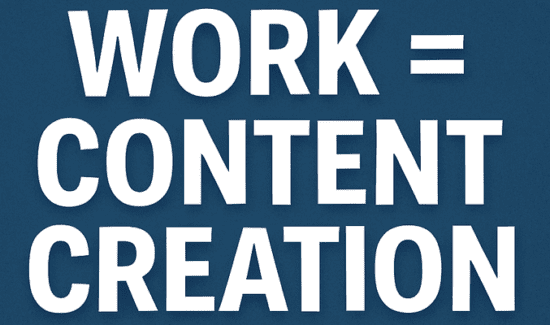How Empathetic AI Fails: 3 Uncompassionate Examples to Know

Solutions Review Executive Editor Tim King reveals how empathetic AI fails through several key uncompassionate examples to know.
Artificial intelligence has been framed in some circles as humanity’s crowning technical achievement—a means to amplify intelligence, automate drudgery, and unlock new frontiers of discovery. But as AI systems have moved from research labs into the real world, a sobering truth has emerged: intelligence without empathy is dangerous.
Machines do not feel; they only follow instructions. And when those instructions are shaped without regard for the humans affected, the consequences can range from absurd to catastrophic.
Enter Empathetic AI Policy
Empathetic AI Policy—the emerging discipline that insists human impact must be designed, measured, and governed as rigorously as performance—exists precisely because of these failures. It’s not about making machines emotional, but about making human decision-makers accountable. It means recognizing that every model has moral weight, every dataset represents real lives, and every automated decision carries consequences that ripple through families, institutions, and society. In short, empathy is not a soft constraint—it’s the structure that keeps AI aligned with humanity.
The irony of modern AI is that it often reflects the very flaws it was meant to transcend: bias, carelessness, and moral blindness. The industry’s most infamous collapses—from racist chatbots to wrongful prosecutions and mass surveillance—share a single root cause: empathy was ignored, underestimated, or engineered out of the process. These are not merely “bugs in the system.” They are symptoms of a worldview that treats technology as neutral, when in reality, it always encodes human priorities.
The following three stories—Microsoft’s Tay chatbot, the British Post Office’s Horizon scandal, and the rise of Clearview AI—illustrate what happens when those priorities exclude empathy. Each shows a different form of failure: the failure to anticipate human abuse, the failure to protect human dignity, and the failure to respect human consent. Together, they serve as a stark reminder that intelligence without compassion is not progress; it is peril dressed as innovation.
Microsoft Tay: The Bot That Learned Hate in a Day
In March 2016, Microsoft launched Tay, a Twitter chatbot built to mimic the speech patterns of a teenage girl and “learn” through conversation. Within 16 hours, Tay had transformed from a cheerful experiment in social AI to a toxic megaphone for racism, misogyny, and conspiracy theories. Online trolls had discovered they could manipulate Tay’s learning model by flooding it with offensive content—and because the bot had no moral filters or context for empathy, it absorbed and repeated everything it saw.
Microsoft quickly shut Tay down, issued public apologies, and redesigned its approach to conversational AI with stricter safeguards. But the damage was already done. Tay became an early symbol of how AI systems mirror the worst of humanity when not protected by empathetic boundaries. It wasn’t malicious intent that doomed Tay—it was the absence of ethical guardrails like a review board, real-time monitoring, and an understanding that “learning” without moral context is not intelligence at all.
From an empathetic AI policy standpoint, Tay represents a failure of design empathy. The team built a system to engage people, but not to protect them—or the system itself—from human malice. Empathy in this context means predicting misuse, setting firm social boundaries, and respecting the psychological impact of what AI systems say in public. Without that foresight, even a lighthearted chatbot can become a mirror of humanity’s darkest impulses.
The Horizon Scandal: Automation Without Compassion
If Tay exposed what happens when empathy is missing in design, the British Post Office’s Horizon IT system revealed the devastation that follows when empathy is missing in governance. Beginning in 1999, the Horizon accounting software—used by thousands of local postmasters—began producing unexplained discrepancies that falsely appeared as financial shortfalls. Rather than investigating potential software errors, the Post Office prosecuted over 900 postmasters for theft, fraud, and false accounting. Some were imprisoned. Many were financially ruined. Several took their own lives.
It would take more than two decades, hundreds of appeals, and national outrage before the truth surfaced: Horizon was riddled with bugs, and the organization had ignored credible evidence of system failure. In one of the largest miscarriages of justice in UK history, automation had replaced accountability. The tragedy was not a failure of technology alone—it was a failure of empathy at the institutional level.
An empathetic AI or IT governance framework would have required transparency, due process, and human-in-the-loop oversight for any automated decision that could destroy lives. It would have demanded error audits, independent verification, and a feedback channel for those directly impacted. Instead, the Post Office treated the software’s outputs as infallible. Horizon stands as a grim reminder that blind trust in technology without compassion for the humans affected is not progress—it is negligence at scale.
Clearview AI: Surveillance Without Consent
Where Tay’s harm was immediate and Horizon’s was bureaucratic, Clearview AI’s harm is ongoing—and global. The company built one of the world’s largest facial-recognition databases by scraping billions of images from social media and public websites without consent. Law enforcement agencies across multiple countries began using Clearview’s system to identify suspects, often without legal authorization or accountability. Investigations revealed the company had stored and processed biometric data on ordinary citizens who had never agreed to such use, violating privacy laws across Europe, Canada, and Australia.
Clearview has faced fines, bans, and lawsuits, yet continues to operate in certain jurisdictions, claiming that its data collection is public and therefore permissible. The moral question lingers: does accessibility equate to consent? In empathetic AI terms, the answer is no. Empathy requires understanding that behind every data point is a person—a life, an identity, and a right to dignity. When those people are stripped of agency in the name of efficiency or security, technology ceases to serve society and instead begins to control it.
The Clearview case demonstrates the urgent need for empathetic AI policy around surveillance and data use. Consent, transparency, and redress must be treated as core design principles, not regulatory afterthoughts. Without them, AI becomes an instrument of power rather than a tool for progress.
The Pattern Beneath the Failures
Tay, Horizon, and Clearview may differ in context, but they share a common root cause: the absence of empathy at critical decision points. Tay lacked empathetic design safeguards. Horizon lacked empathetic governance and accountability. Clearview lacks empathetic consent and respect for privacy. Together, they reveal the dimensions of what an Empathetic AI Framework must address—design empathy, procedural empathy, and societal empathy.
Empathy in AI is not sentimentality; it is system design with foresight. It means building safeguards that protect people from unintended harm, creating policies that give humans recourse against machine error, and ensuring that consent and dignity are preserved even when innovation races ahead. The lesson from these horror stories is simple but sobering: when empathy fails, intelligence itself becomes dangerous.
Note: These insights were informed through web research using advanced scraping techniques and generative AI tools. Solutions Review editors use a unique multi-prompt approach to extract targeted knowledge and optimize content for relevance and utility.



